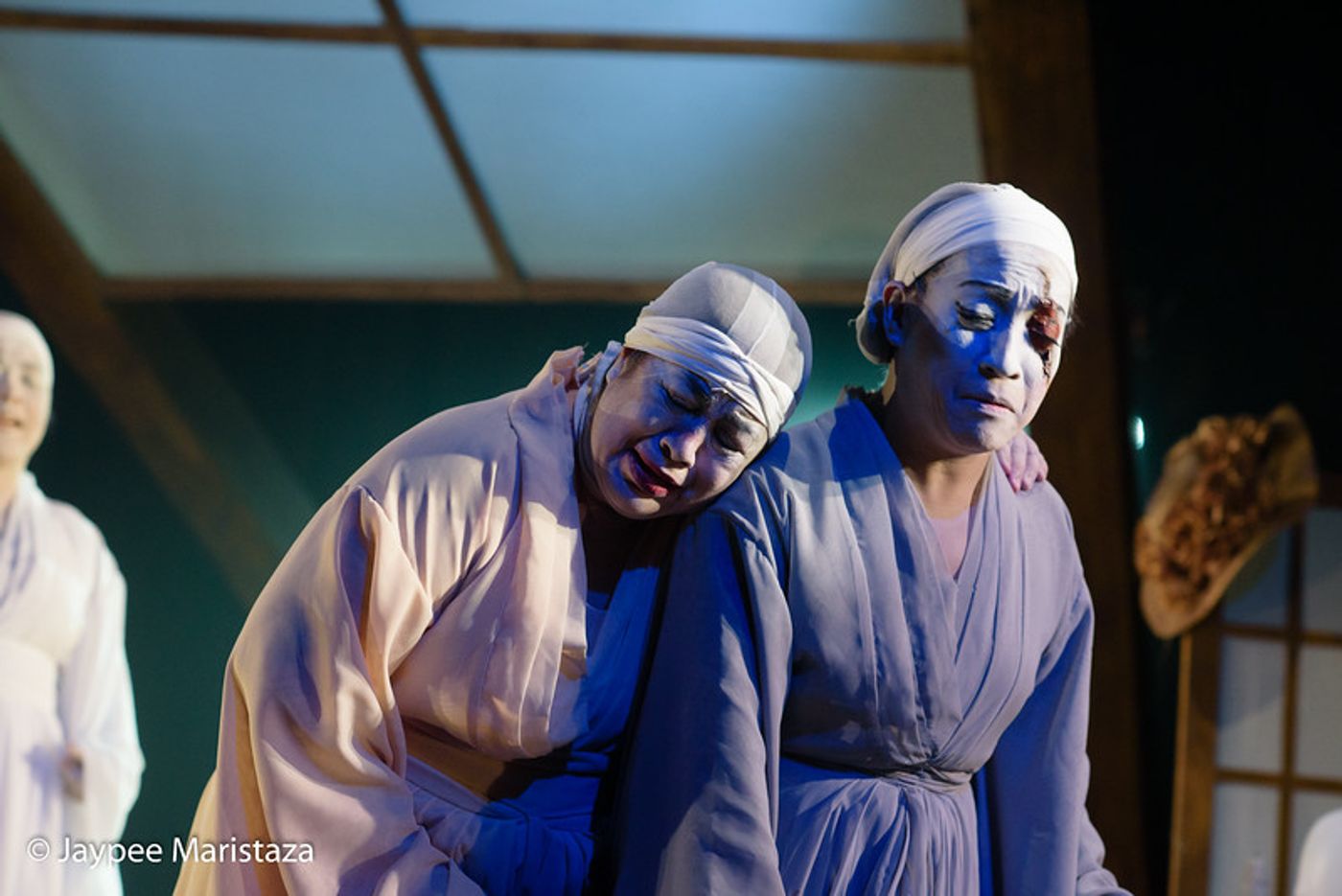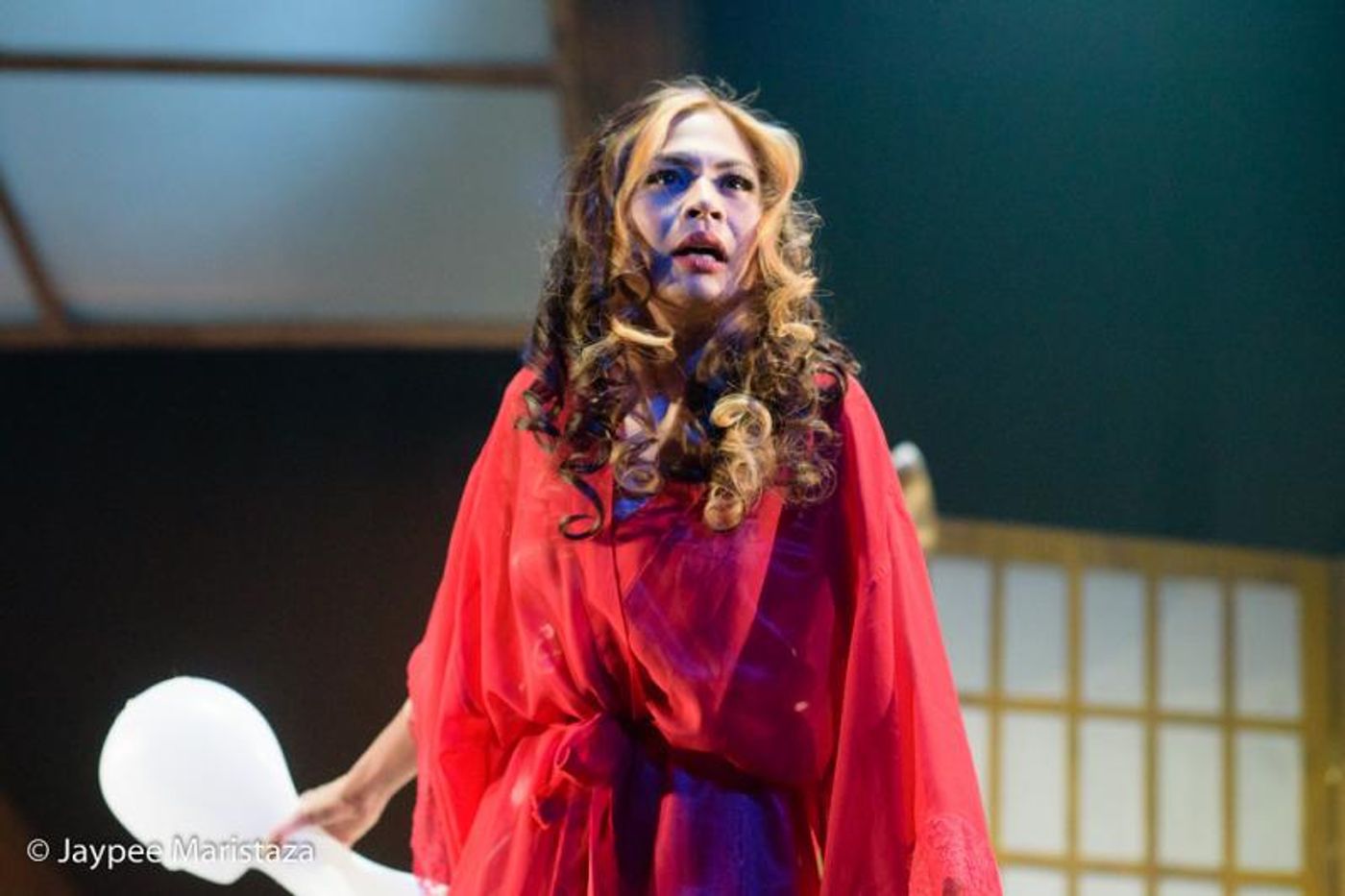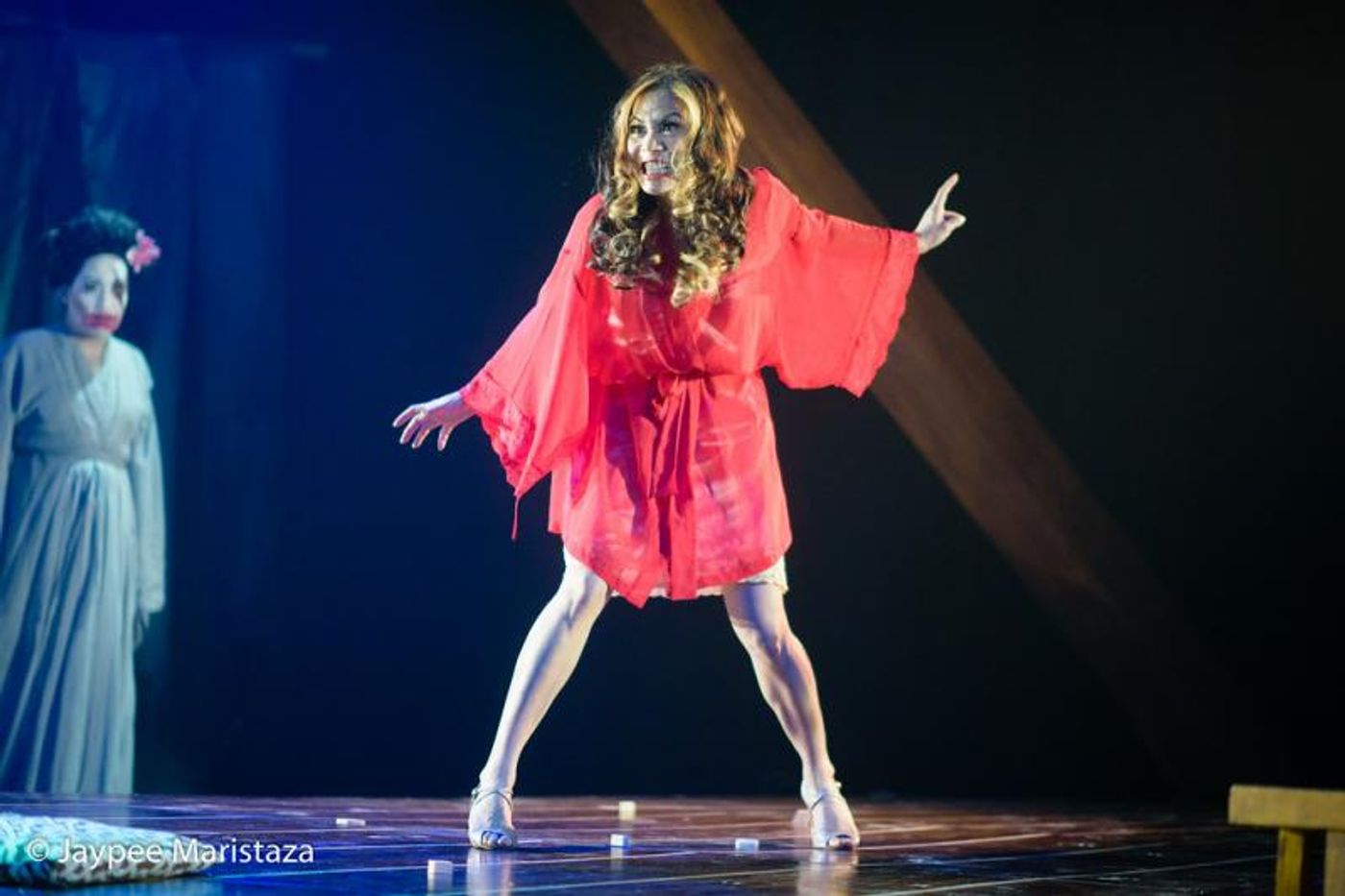Review: Dulaang UP's THE DRESSING ROOM is Worth the Visit
 Imagine yourself in a small room where you can watch people in their most unguarded moments and listen to their innermost, basest desires without any burden or worry of getting caught... Imagine yourself doing what you love doing with no cares for time and space... Imagine yourself in a dressing room where the ethereal meets the corporal, and the objects of your voyeuristic eyes are actresses prepping up for their roles prior to their cues on stage.
Imagine yourself in a small room where you can watch people in their most unguarded moments and listen to their innermost, basest desires without any burden or worry of getting caught... Imagine yourself doing what you love doing with no cares for time and space... Imagine yourself in a dressing room where the ethereal meets the corporal, and the objects of your voyeuristic eyes are actresses prepping up for their roles prior to their cues on stage.
Dulaang UP's (DUP) production of "The Dressing Room" (English Version) allows you to exactly do that. This 1977 post-war Japanese play by Shimizu Kunio, based on a translation adapted by Chiori Miyagawa from an original translation by John Gillespie, attempts to interweave traditional Japanese theater forms Noh, Kabuki, and Kyogen and their unique elements like ghosts or spirits, history, and comedy.
A repeat of the 2016 DUP production, "The Dressing Room" claims to be more nuanced and full of discoveries, as director Alexander Cortez puts it during the curtain call. But what discoveries exactly await audiences who would dare watch a school production rather than those big shows currently playing Manila?
Echoes of WWII
With 40-50 million casualties, World War II (1939-1945) is the world's bloodiest war. This global conflict involved almost every major country in the world and was fought between the Allies (France, Great Britain, and the US) and the Axis powers to which Germany, Italy, and Japan belonged. To the Japanese, WWII is the most painful event in their colorful history, owing to the fact that the country instantaneously lost more than 70,000 lives to the US atomic bombing of Hiroshima on August 6, 1945. The radioactive repercussions of the bombing are felt even to this day.
 Written in a time of reflection and recovery from the war, "The Dressing Room" exudes melancholia amidst its dominant ironic and witty elements. Interestingly juxtaposed into Kunio's noble artistic and patriotic intents is Anton Chekov's classic, "The Seagull." A play within a play, the show exposes its four characters' individual aspirations and frustrations, the object of which is Chekov's Nina-a role that has, in reality, either launched or destroyed an aspiring actress's dream of Hollywood fame.
Written in a time of reflection and recovery from the war, "The Dressing Room" exudes melancholia amidst its dominant ironic and witty elements. Interestingly juxtaposed into Kunio's noble artistic and patriotic intents is Anton Chekov's classic, "The Seagull." A play within a play, the show exposes its four characters' individual aspirations and frustrations, the object of which is Chekov's Nina-a role that has, in reality, either launched or destroyed an aspiring actress's dream of Hollywood fame.
The Bare Essentials
Walking into the Wilfrido Ma. Guerrero Theatre on the 2nd floor of the UP Palma Hall, one is greeted by an almost bare stage (set design by Ohm David) with sail-like fabrics hanging ominously at the upper right of the stage. The wooden ramp installed diagonally traversing the stage gives an illusion of perspective and depth to the small performance space. Such minimalist undertaking successfully hides what treasure trove this humble production is bound to offer, and the result is innovative, mesmerizing, and at the most, thought-provoking.
At the helm is Cortez, who at curtain call was as nostalgic as his material, sadly recalling the massive fire that burned down the historic UP Faculty Center while the 2016 production was ongoing. Cortez's present creative vision is cohesive in approach, striking a balance between comedy and tragedy. With the minimalist approach, the bigger gems of the production--the innovative choreography and superb acting--become more focused and downright affective, and one may contend that this college production is at par with those presently playing Manila's biggest commercial venues.
 Although dated and pockmarked by few clichés, Shimizu's script is still a relevant masterpiece. Its dark humor permeates the entire narrative, successfully bringing out the anatomy of the acting profession and the actors that enliven, or dampen it. Shimizu's character sketches of the four Nina wannabes successfully provide a comic yet in-depth analysis of a performer's aspirations, fears, and madness in different levels and personal contexts.
Although dated and pockmarked by few clichés, Shimizu's script is still a relevant masterpiece. Its dark humor permeates the entire narrative, successfully bringing out the anatomy of the acting profession and the actors that enliven, or dampen it. Shimizu's character sketches of the four Nina wannabes successfully provide a comic yet in-depth analysis of a performer's aspirations, fears, and madness in different levels and personal contexts.
Perhaps the most remarkable gem of this endeavor is Dexter Santos' choreography. Santos' raw and guttural creations are effectively and beautifully translated in the pliable and powerful young bodies of the ensemble composed of Lance Reblando, Aira Jay Igarta, Ann Bumanglag, Christine Wico Laforteza, Renz Jimwell Bernardo, Zheglayne Arban, and Auriz Llorens. Together, they combine sinew and grace in memorable movement pieces that help the story sink more deeply into the audience's consciousness.
Meliton Roxas Jr.'s unassuming but haunting lighting, on the other hand, is subtle yet poignant. His powerful chiaroscuros in highly dramatic scenes are to watch out for. Other laudable efforts are Faust Peneyra's costumes, Jethro Joaquin's sound design, and Patricia Balboa's textural videos--all of which contribute to the production's excellent experimental value.
Powerful Performances
"The Dressing Room" is a casting coup with four lead actresses who are individually unique and powerful in their portrayals.
Ces Quesada as Actress B displays a powerful, highly nuanced performance. Her nuances exude that unmistakable hint of sadness hidden underneath the pasty white makeup and witty lines. A veteran thespian herself, Quesada's impeccable comedic timing is one that is characterized by effortless delivery and complete understanding of the character.
Frances Makil-Ignacio as Actress A complements Quesada's character in a give-and-take Tom-and-Jerry-like fashion. It would have been daunting for a lesser actress to play side by side with Quesada, lest she be eclipsed by the latter's versatility. But that is not the case with Ignacio, who, like her partner, delivers her lines with flair and aplomb. Together, Ignacio and Quesada make a perfect pair--this duo will leave you in stitches.
 Missy Maramara's remarkable performance as Actress C could be attributed to her adept use of her eyes. In her most dramatic scenes, her eyes speak a trillion words; it is almost impossible not to be moved by her longings. Her smooth shift from her fiery natural self to the mediocre actress playing Nina is punctuated by palpable emotional highs. Not to be missed is her transmogrification to madness, where her usually dainty voice assumes the ferocious tones of a monster.
Missy Maramara's remarkable performance as Actress C could be attributed to her adept use of her eyes. In her most dramatic scenes, her eyes speak a trillion words; it is almost impossible not to be moved by her longings. Her smooth shift from her fiery natural self to the mediocre actress playing Nina is punctuated by palpable emotional highs. Not to be missed is her transmogrification to madness, where her usually dainty voice assumes the ferocious tones of a monster.
Maxine Ignacio as Actress D, Actress C's assistant/prompter, may be the youngest, but she holds her own against her three co-stars. Her Betty Boop voice sets her apart from Quesada, Ignacio, and Maramara. Her child-like portrayal provides a chilling yet hilarious climax to the narrative as she successfully unmasks Actress A and Actress B's pretensions and leads the way to nail those principal female parts in Chekov's equally famous play, "Three Sisters."
The Judgment
"The Dressing Room" is a guaranteed immersive experience worth the visit. You'd be a boring spook not to catch it.
Dulaang UP's "The Dressing Room" runs now until Sunday, November 25, 2018, at the Wilfrido Ma. Guerrero Theatre (2F Palma Hall, UP Diliman, Quezon City). Get tickets (P500) from Joshua Chan, marketing manager, at (63917) 677 5141.
Photos: Jaypee Maristaza
Reader Reviews
Videos

